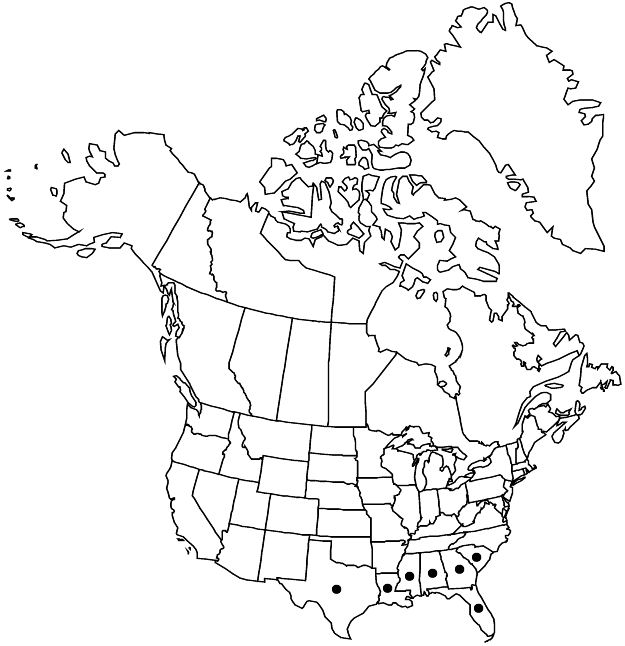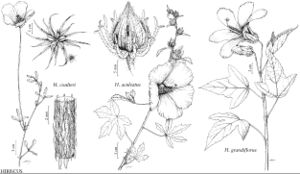Difference between revisions of "Hibiscus grandiflorus"
Fl. Bor.-Amer. 2: 46. 1803.
FNA>Volume Importer |
imported>Volume Importer |
||
| (3 intermediate revisions by 2 users not shown) | |||
| Line 10: | Line 10: | ||
|special_status={{Treatment/ID/Special_status | |special_status={{Treatment/ID/Special_status | ||
|code=F | |code=F | ||
| − | |label= | + | |label=Illustrated |
}} | }} | ||
|basionyms= | |basionyms= | ||
| Line 16: | Line 16: | ||
|name=Hibiscus urbanii | |name=Hibiscus urbanii | ||
|authority=Helwig | |authority=Helwig | ||
| + | |rank=species | ||
}} | }} | ||
|hierarchy=Malvaceae;Malvaceae subfam. Malvoideae;Hibiscus;Hibiscus grandiflorus | |hierarchy=Malvaceae;Malvaceae subfam. Malvoideae;Hibiscus;Hibiscus grandiflorus | ||
| Line 40: | Line 41: | ||
-->{{#Taxon: | -->{{#Taxon: | ||
name=Hibiscus grandiflorus | name=Hibiscus grandiflorus | ||
| − | |||
|authority=Michaux | |authority=Michaux | ||
|rank=species | |rank=species | ||
| Line 54: | Line 54: | ||
|publication title=Fl. Bor.-Amer. | |publication title=Fl. Bor.-Amer. | ||
|publication year=1803 | |publication year=1803 | ||
| − | |special status= | + | |special status=Illustrated |
| − | |source xml=https:// | + | |source xml=https://bitbucket.org/aafc-mbb/fna-data-curation/src/2e0870ddd59836b60bcf96646a41e87ea5a5943a/coarse_grained_fna_xml/V6/V6_475.xml |
|subfamily=Malvaceae subfam. Malvoideae | |subfamily=Malvaceae subfam. Malvoideae | ||
|genus=Hibiscus | |genus=Hibiscus | ||
Latest revision as of 22:21, 5 November 2020
Herbs, perennial, to 3 m. Stems glabrous or rarely stellate-hairy on younger parts, without line of minute, curved length 1/2–1 times petioles, glabrate or finely hairy; involucellar bractlets 9–13, linear-subulate, 1.3–2.7 cm, margins not ciliate, velvety-hairy. Flowers horizontal or ascending; calyx divided to ± middle, broadly campanulate, 2.9–6 cm, larger in fruit, lobes triangular, apices acute to subcaudate, velvety-hairy, nectaries absent; corolla broadly to narrowly funnelform, petals pale pink to white, red basally, narrowly obovate, usually not conspicuously overlapping, 8.5–14 × 4–8.5 cm, apical margins repand, finely hairy abaxially where exposed in bud; staminal column straight, pink to white, 6.2–9.5 cm, length 2/3 petals, bearing filaments throughout its length, free portion of filaments secund, 3–9 mm; pollen yellow; styles white, 7–17 mm; stigmas yellow. Capsules light to dark brown, ovoid to subglobose, 2.2–3.5 cm, apex apiculate, hispid with simple, yellowish-brown to reddish-brown hairs. Seeds brown to reddish brown, reniform-globose, 2.8–3.1 mm, verrucose-papillose. 2n = 38.
Phenology: Flowering (May–)Jun–Aug(–Sep).
Habitat: Freshwater and brackish marshes
Elevation: 0–20 m
Distribution

Ala., Fla., Ga., La., Miss., S.C., Tex., West Indies (w Cuba).
Discussion
The flowers of Hibiscus grandiflorus first open in the evening, emit a pleasant fragrance, and are pollinated by sphingid moths (O. J. Blanchard 1976). It is relatively common only in Florida. Hibiscus grandiflorus is sometimes cultivated and has been found to be hardy as far north as Illinois (S. R. Hill, pers. comm.).
Selected References
None.
